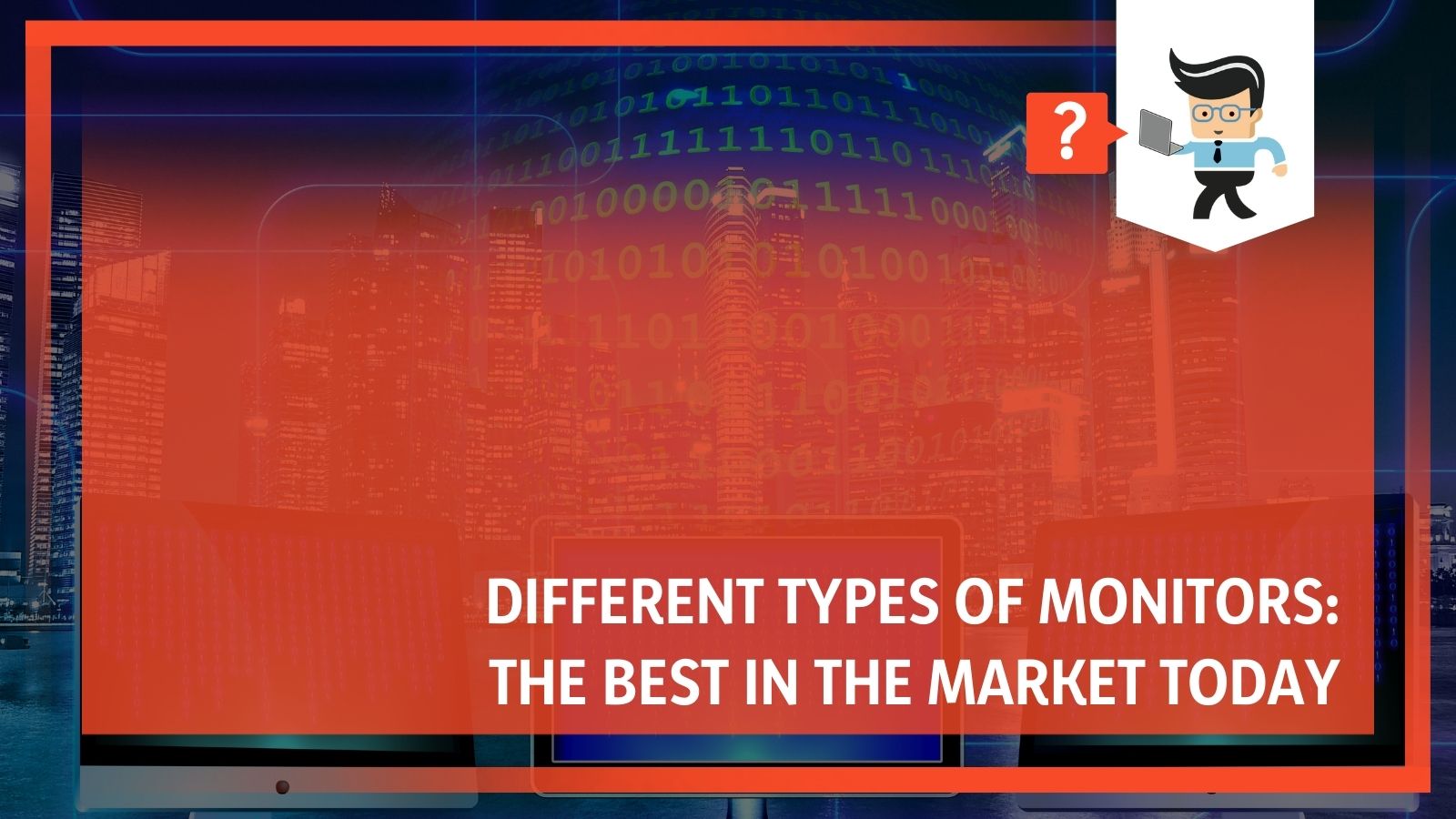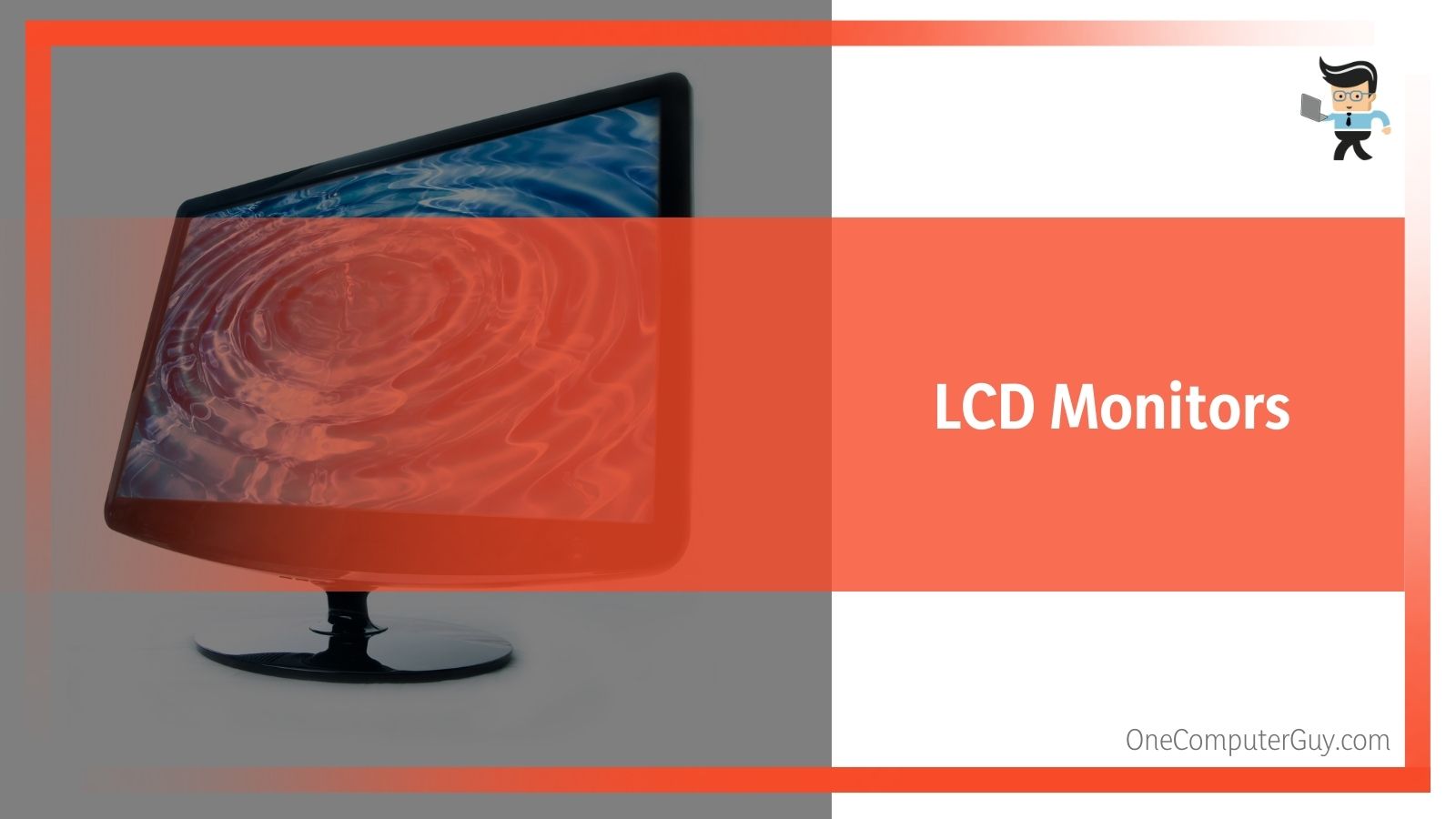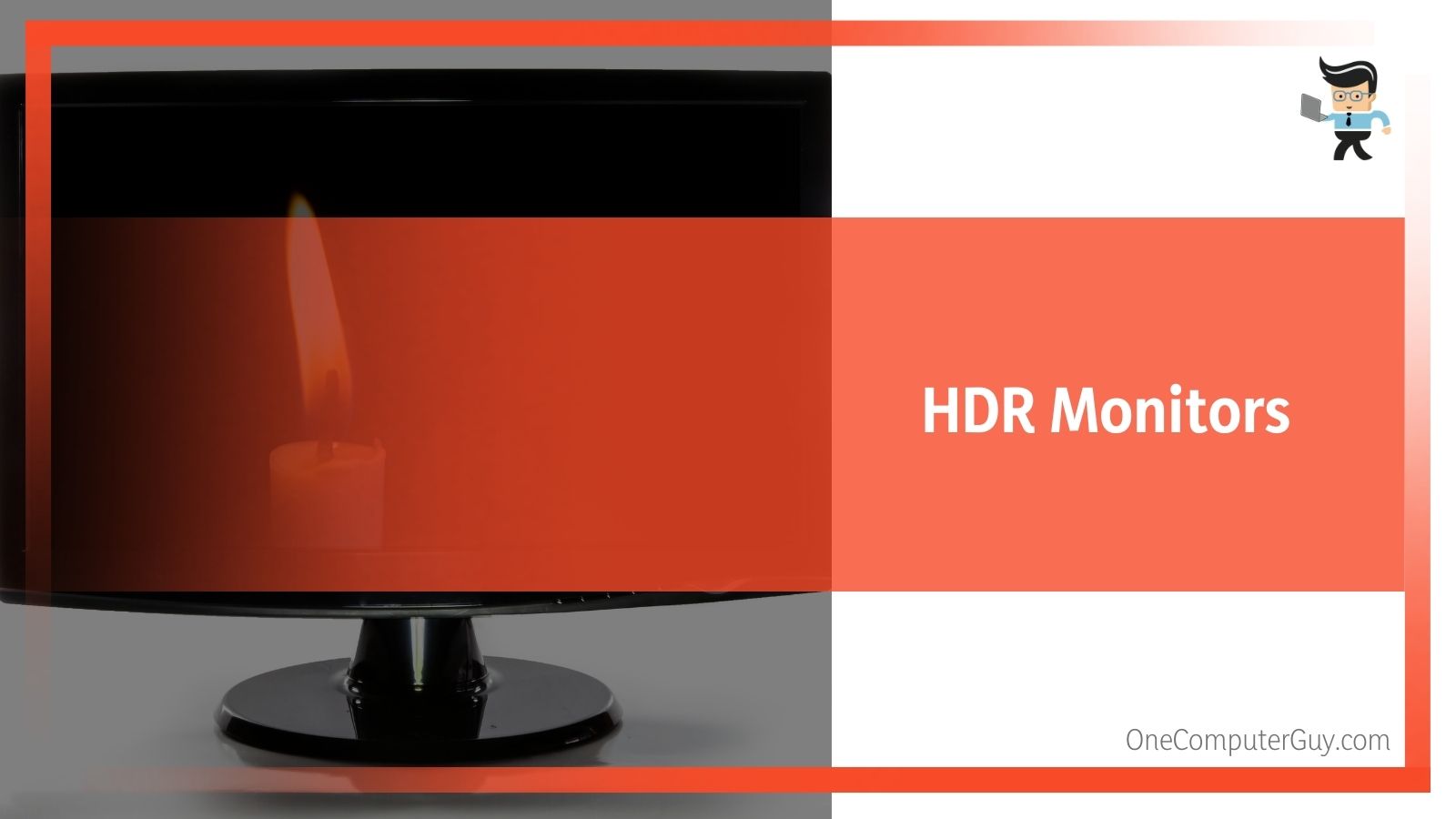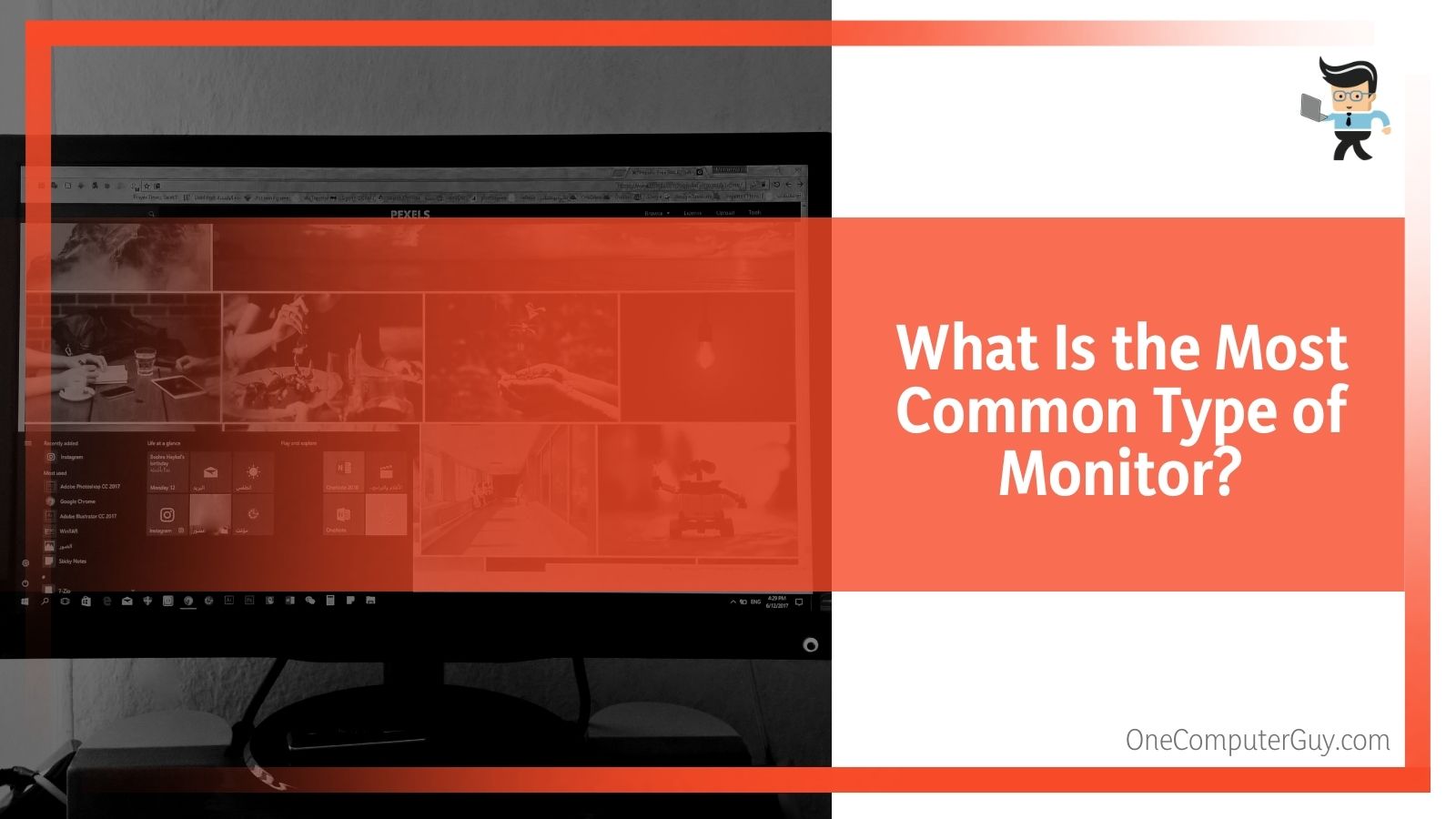What are the different types of monitors in the computer market today?
When you go to build your own PC or buy a new monitor, it can be hard to differentiate between the different types of computers monitors out there. Luckily, our experts have done the work to break down the different types of displays, monitors, tech, and price levels for most monitors available on the market today.
 Everyone is going to have a different opinion and varying experiences with monitors, and the “best” option for you really depends on how you plan to use the monitor itself. Our experts will try to be impartial when discussing the different types of computer screens and monitors you might need.
Everyone is going to have a different opinion and varying experiences with monitors, and the “best” option for you really depends on how you plan to use the monitor itself. Our experts will try to be impartial when discussing the different types of computer screens and monitors you might need.
Contents
What Are the Different Types of Monitors?
In general, there are three different types of computer monitors. Each has its own place in computer building and use. Some of these monitors are going out of favorability because we keep making technology improvements, but these are still the main three we talk about.
– CRT (Cathode Ray Tube) Monitors
The oldest type of monitor is the CRT monitor. This is most commonly used with television screens and other monitors perfect for streaming, design work, and more. They are larger and bulky than other monitors, but they do last a very long time.
These monitors use a stream of electrons to form images on fluorescent screens. The cathode tube is a pathway for the electron gun to shoot a gun at one end and then show up on the screen at the other end.
If you are looking for a monitor, this probably isn’t the type you will buy. They are getting harder to find, they are bulky, and they weigh quite a bit. However, they are still quite popular in manufacturing.
– LCD (Liquid Crystal Display) Monitors
LCD monitors were the most popular type of monitor for a few years. They are some of the most advanced and still seen as the golden standard by some people.
These monitors utilize a lawyer of color or monochrome pixels between two layers of electrodes and polarizing filters. The light is displayed in varying amounts that then pass through the named liquid crystal layer.
There are two active types of LCD monitors:
- TFT monitors have a better picture, are a better investment overall, and are highly reliable
- Passive Matrix Technology monitors are cheaper but slower and slowly becoming outdated
LCD monitors are so popular because they produce “thin” screens that are lightweight. They are also “greener” because they don’t use as much electricity. They can also be run off of battery power, which is why they were the golden standard for laptops and even tablets for some time.
 People choose these monitors because they do not pixelate or destroy images. They sometimes do have a little bit of a flicker.
People choose these monitors because they do not pixelate or destroy images. They sometimes do have a little bit of a flicker.
Another issue is that they are more expensive to get an excellent image quality. Unless you are willing to pay more, these monitors have some terrible image quality issues at certain angles, so they aren’t great for sharing.
– LED (Light-Emitting Diodes) Monitors
LED monitors are the newest and most exciting monitors available on the market today. They are flatter than even LED monitors. However, you can also get them in a curved or hinged model, making them popular with gamers.
These monitors use light-emitting diodes for backlighting, which makes them unique. They use even less power than the other two types, and their manufacturing is greener.
The images on an LED monitor are even better than an LCD screen. These images have higher contrast, making them a good choice for anyone who uses monitors for streaming, editing, and even word processing.
They use less plastic and fewer chemicals, which reduces the environmental impact throughout the manufacturing process and when they are disposed of.
The only significant downside to LED monitors is that they are expensive, especially the curved models and brand new ones. These monitors are also delicate and get damaged much more easily than other types of monitors.
What Are the Categories of Monitors?
The other way we typify or categorize monitors is through how they are designed. Screen size, technology, and resolutions are some of the ways computers differ, but those are very specific types of monitors. The shapes and sizes of the monitor matter as well.
We can break those monitors down into these types:
-
Home or Business Use
These are the most generalized category of monitor. General use monitors are those found in homes and offices all over the world.
They don’t have the capability to handle graphics-heavy games or editing software. Instead, they are used to run word processing applications, browse the internet, and maybe watch some videos.
Home or business use computer monitors are the least expensive monitors as a general rule. They are perfect for those on a budget but don’t expect the best graphics, specs, or upgrades on these monitors.
-
Professional Monitors
If you are an artist, photographer, or someone who needs to edit photos and videos, you need a professional monitor. We’ll talk more about that later, but these monitors have more customization options and tend to be a bit more expensive.
-
Gaming Monitors
Gaming monitors encompass a large range of monitors. These are “faster” monitors that have higher refresh rates. Typically, this is up to 240Hz, which means that you can play games without worrying about image lag.
Display response times can take a good monitor and make it a great monitor. If you play games professionally or it is an important hobby for you, investing in a gaming monitor can make you a better player and teammate.
Gaming monitors have different options, including syncing, which can eliminate some of the tearing and stuttering that hinder your gameplay.
-
HDR Monitors
HDR stands for high dynamic-range monitors. They use the latest color-range technology to make everything seem more realistic on your screen. This type of technology was used in cameras first. It helps to improve image quality, including the depth of field, contrast, and color.
 HDR monitors fall under the “professional” category as well as the “gaming” category. One way to know if you need an HDR monitor is to look at the apps you run on your computer and see if you can find the “minimum” requirements for those applications. If they are high, you probably need an HDR monitor.
HDR monitors fall under the “professional” category as well as the “gaming” category. One way to know if you need an HDR monitor is to look at the apps you run on your computer and see if you can find the “minimum” requirements for those applications. If they are high, you probably need an HDR monitor.
-
UltraWide Monitors
UltraWide monitors are, like their name suggests, wider than your average monitor. This feature gives more screen space when you use two or more windows, run two different applications at once, or just like to have more than one screen open. It’s a great option for a professional.
Sometimes, UltraWide monitors can get a little unique in size, making it difficult to fit them onto a desk. You need to pay close attention to the screen size (the measure of the screen on a diagonal) and the aspect ratio (which is expressed as width x height) to pick a monitor that will fit your system.
-
Curved Monitors
Considered a “luxury” monitor, curved screen monitors have been out since about 2014. These screens are wider than the average monitor and curve in towards the viewer, giving it a more realistic experience. The immersive feature is great for gamers and those who watch a lot of movies.
Curved screens tend not to be suitable for business usage.
-
Touchscreen Monitors
Most of the screens we use today are touchscreens, but not all computer monitors have this feature. This function can get annoying since we can accidentally touch and bump our monitors. Some computers have touchscreen monitors because they have a tablet mode, but this only applies to laptops.
Some monitors allow you to turn the “touch” feature on and off, which is important. Touch monitors do have a place in society, however. They are great for teaching and collaborative working.
Computer Display Types: Your Options
You have plenty of options when you want to buy a monitor, but only some of those options are going to matter at the end of the day. Before purchasing a monitor, you will have to think about the different ways you will use the said monitor.
Will it be in a professional setting, or will you casually use it to browse the internet?
Answering that question is the most important thing.
Computer Display Types for the Home
If you want to avoid spending money that you don’t need to spend on a monitor, you can cut some corners. A general monitor is usually good enough whether you are gaming or just using a word processing program.
There are some things you want to think about, however. The primary one is how you are going to use the monitor: gaming, streaming, or productivity. Once you decide on that, you will be able to narrow down the types of monitors you should be looking at.
 For gaming or streaming, picture quality is the most important thing. You need to think about the contrast of the monitor.
For gaming or streaming, picture quality is the most important thing. You need to think about the contrast of the monitor.
What dynamic range does the display have? Are the images realistic and 3D, or are they flatter and duller?
One thing to consider if you are looking for a type of monitor for gaming is a VA panel. These have higher contrast and have better image quality.
If you do a lot of work on your computer, you may want to get something that doesn’t flicker. The flicker can cause issues with your vision, increase eye fatigue, and even increase overall strain.
Many people think they need to buy a low blue light monitor for those reasons, but this isn’t something to consider when thinking about types of monitors. You can control the blue light on the computer itself. Monitors that are labeled as “low blue light” tend to have weaker displays that don’t show as many colors.
Computer Display Types for the Professional
Professional monitor types are a bit different. There are special requirements for those monitors.
Mainly when we talk about “professionals,” we aren’t talking about a banker or a marketer. Instead, we are thinking about photographers, video editors, web designers, game designers, and more—the people whose careers depend on their ability to see the details of images or videos.
If you are working with images, you need to ensure that your monitor is color accurate. Some options are accurate right out of the box, and those can be set to perfect.
You need to decide how much work you want to do to set your monitor up. Regardless, you want to look at the DeltaE (dE) value of your monitor. Anything rated two or lower is a good monitor for the professional. If everything else is good, anything between a two to three is still passable, particularly for the hobbyist.
You also want your monitor to have calibration choices so that you can set your monitor and personalize it. There may be some appeal in a “plug and play” monitor, but that won’t work for most professionals.
You need to be able to change the calibration, get different color temperatures and gamma curves. Every industry has its own standards for the different calibration choices.
Different Panel Types of LCD Monitors
There are different panels on each monitor as well. These come in LCD monitor screens, and it is important to know the differences between these types. Some are more expensive and better for gaming and editing purposes, whereas others are cheaper and good for home or business use.
-
TN Panels
TN panels, or twisted-nematic panels, are largely considered the best of the best. These monitors have higher refresh rates, fast response times, and they are beautiful as well. Still, the monitors aren’t always great for color presentation, and they have horrible views from different angles.
TN panels are the most affordable and best for gaming. They are the only panels that support higher refresh rates and provide a smooth experience for all users.
-
IPS Panels
IPS panels (in-plane switching) have more accurate colors and better viewing angles. They were designed as a direct opposite of TN panels, but instead of being for gamers, they are for professionals and artists.
 Most of these monitors don’t have high refresh rates or response times, however. They are also much more expensive in general.
Most of these monitors don’t have high refresh rates or response times, however. They are also much more expensive in general.
Still, many gamers have found a workaround in that they use G-Sync or AMD FreeSync to get good refresh rates.
-
VA Panels
VA panels first came out in the nineties. They aren’t as popular anymore, and people only have them if they want something older. They did have good refresh rates and some better color contrast than other options at the time.
Some companies are still making VA panels, even though they aren’t as popular as they used to be.
-
OLED Panels
The newest type of panels, OLED panels (Organic light-emitting diodes), aren’t used in computer monitors just yet, but they will be soon. These monitors do not require backlighting or filters, which will make them smaller and thinner.
Types of Monitors: Standing or Mounted
Monitors can further be broken down into two more “types.” This is how the monitor is set up for use. You can either mount a monitor or use it with a stand.
A mounted monitor is mounted on the wall using a mechanism on the back of the monitor. Most monitors today come with some sort of mechanism for mounting, though you may need to purchase your own mounting system.
A monitor on a stand sits on the desk and can be adjusted from there. The monitor itself can be on a stand, or you can add a stand to the monitor, and they will be two separate pieces.
What Is the Most Common Type of Monitor?
Right now, LCD monitors are the most common type of monitor. Most people will just buy these off the internet or their favorite big box store. These are the monitors you are most likely to find in computer labs, at universities, workplaces, in libraries and more.
 The most common monitors are those that come standard. They aren’t anything special, but they are good enough to get the job done.
The most common monitors are those that come standard. They aren’t anything special, but they are good enough to get the job done.
In Conclusion
It doesn’t matter what type of computer you build; your PC will only be as good as the monitor you buy. It will impact almost everything you do on it.
When you buy a monitor, you need to think about it as an investment into your computer. Save money, if you need to, to get the best monitor you can. Whether you are playing games, doing work, streaming content, or just browsing the internet, your monitor is the eyes of your computer.
When you buy a monitor, you will know right away whether or not you made the right selection. You don’t want to waste money on something with features you won’t use, but you don’t want to sell your computer short either. It’s a fine line to walk, but it is an important one. Be aware of the computer monitor technology you will use and what you can skip.







